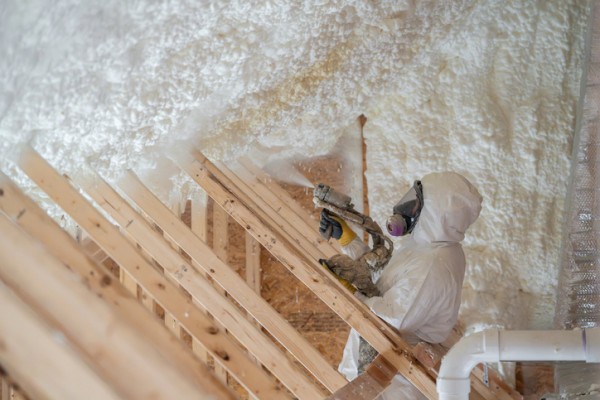
Whether you’re battling extreme summer heat or chilly winter nights, insulation is one of the most effective ways to boost your home’s comfort and energy efficiency. A well-insulated home stays warmer in winter, cooler in summer and significantly reduces heating and cooling costs.
If your home feels drafty or you’re constantly adjusting the thermostat, it might be time to improve your insulation. Here’s how to approach it room by room, layer by layer.
Start with the roof and ceiling
Your ceiling is often the biggest source of heat loss in winter and heat gain in summer. That’s why ceiling insulation should be your first priority.
- In existing homes, you can retrofit bulk insulation batts between ceiling joists.
- For new builds, consider combining bulk insulation with reflective foil sarking for optimal thermal performance.
- Don’t forget to seal any gaps around downlights, manholes or exhaust fans to prevent heat transfer.
You can learn more about effective ceiling and wall insulation in our step-by-step guide.
Upgrade your walls
Walls account for a significant portion of your home’s external surface area. If you’re renovating or recladding, it’s the perfect time to improve wall insulation.
- Install insulation batts between the wall studs.
- Use plasterboard with added acoustic or thermal properties.
- In some cases, blow-in insulation can be retrofitted into existing walls without removing plasterboard.
Wall insulation not only improves temperature control but also helps reduce outside noise.
Insulate under your floors
If you have a suspended timber floor, insulating underneath can prevent cold air from creeping in during winter.
- Install bulk insulation between the joists beneath the floorboards.
- Consider sealing any gaps between boards or skirting to stop draughts.
- For slab-on-ground homes, edge insulation helps reduce heat loss.
You can find more details in our floor insulation overview.
Choose windows that work harder
Windows can make or break your home’s thermal envelope. If you’re serious about insulation, upgrading your windows is a must.
- Double glazing significantly reduces heat transfer and outside noise.
- Use window frames made from thermally efficient materials like uPVC or thermally broken aluminium.
- Add thick curtains or blinds to further improve performance.
Also look into Low-E glass, which can reflect radiant heat while still allowing natural light in.
Seal the gaps
Even with good insulation, air leakage can undo all your hard work. To tighten your home’s thermal envelope:
- Install door seals and weatherstripping
- Use caulking or foam to fill gaps around windows, skirting and vents
- Check for hidden leaks in places like roof cavities, subfloors and service penetrations
Sealing is a low-cost upgrade that makes a big difference, especially in older homes.
Insulate your pipes and hot water system
Thermal efficiency doesn’t stop with the building envelope. Insulating your hot water system and pipes:
- Reduces heat loss from stored hot water
- Improves energy efficiency
- Helps maintain water temperature in cold conditions
Even a simple pipe wrap or insulating jacket can have a measurable effect.
Think beyond temperature
Insulation isn’t just about temperature—it can improve acoustic comfort too. Many insulation products also offer soundproofing benefits, making your home quieter and more serene.
When should you upgrade your insulation?
The best time to upgrade insulation is during a renovation or extension, when internal wall cavities and roof spaces are exposed. However, targeted upgrades—like adding insulation to your ceiling or sealing draughts—can still make a noticeable impact.
Improved insulation means lower energy bills, more consistent indoor temperatures and a smaller environmental footprint. Whether you tackle it all at once or in stages, insulation is an upgrade that pays off for years to come.





